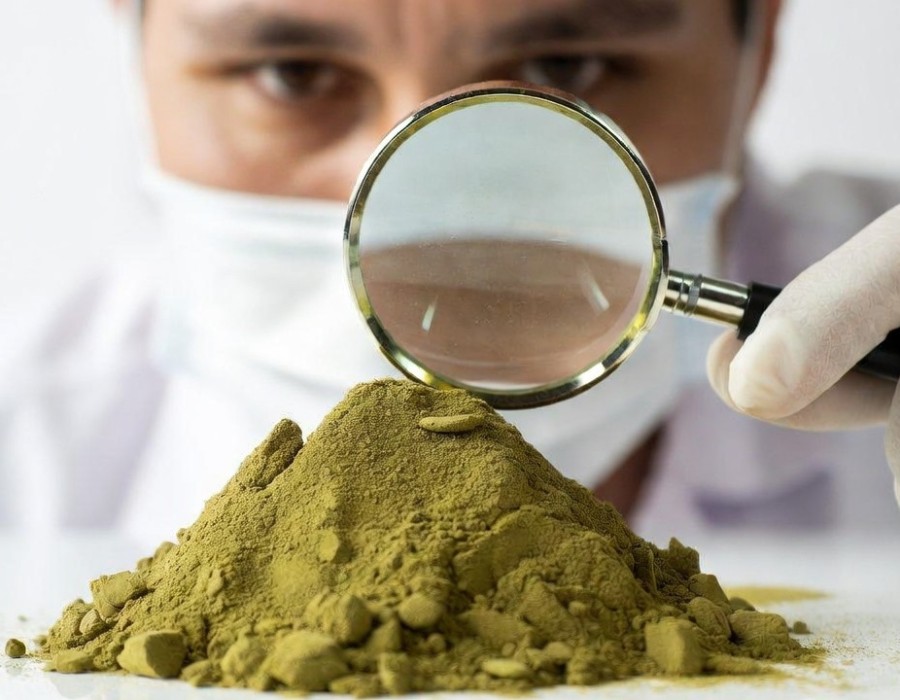Kratom (Mitragyna speciosa) has gained significant attention in recent years as a botanical supplement used for pain relief, mood enhancement, and opioid withdrawal support. While many users report positive experiences, concerns about safety persist, largely due to the risk of contamination during harvesting, processing, or intentional adulteration. Understanding these potential contaminants is essential for anyone considering kratom.
Common Kratom Contaminants Found in Lab Testing
Independent laboratory analyses of commercial kratom products have repeatedly identified several concerning substances. The most frequently detected contaminants include:
- Heavy metals (lead, nickel, arsenic, cadmium, mercury)
- Pathogenic bacteria (Salmonella, E. coli, Staphylococcus)
- Yeast and mold (including aflatoxin-producing species)
- Residual solvents from extraction processes
- Pharmaceutical adulterants (discussed in detail below)
These findings come from FDA import alerts, academic studies, and third-party testing organizations such as the American Kratom Association’s GMP-qualified vendors.
Heavy Metals in Kratom: A Persistent Concern
Kratom trees absorb minerals from the soil, which means environmental pollution can lead to elevated heavy metal levels. Southeast Asian growing regions, where most kratom originates, sometimes have soil contaminated by industrial activity, mining, or agricultural runoff.
Lead is the most commonly reported heavy metal exceeding safe limits. A 2019 study published in Drug Testing and Analysis found lead concentrations in some samples up to 10 times higher than California Proposition 65 safety thresholds. Nickel and arsenic have also appeared at concerning levels. Consumers purchasing Canada kratom should prioritize vendors who provide certificates of analysis (COAs) showing heavy metal testing below established safety limits.
Bacterial and Microbial Contamination Risks
Because kratom leaves are traditionally dried outdoors or in open-air facilities, microbial contamination remains a significant issue. Multiple Salmonella outbreaks linked to kratom products have occurred in the United States between 2018 and 2023, leading to hospitalizations.
Common pathogens identified include:
- Salmonella enterica (multiple serotypes)
- Escherichia coli
- Listeria monocytogenes
- Bacillus cereus
- Various mold species capable of producing mycotoxins
Adulterated Kratom: The Danger of Synthetic Additives
One of the most alarming discoveries in recent years is deliberate adulteration. Some vendors, particularly in unregulated markets, have spiked kratom with synthetic compounds to enhance effects and increase profits. Documented adulterants include:
- 7-hydroxymitragynine (in unnaturally high concentrations)
- O-desmethyltramadol (a synthetic opioid)
- Phenylethylamine derivatives
- Hydrocodone and morphine (in rare cases)
These adulterated kratom products pose extreme risks because users are unaware they are consuming powerful pharmaceuticals. Several overdose deaths initially attributed to kratom were later found to involve adulterated products containing fentanyl analogs or tramadol derivatives.
The Importance of Third-Party Testing for Canada Kratom Buyers
Consumers in Canada face the same contamination risks as those elsewhere, despite strict general supplement regulations. Health Canada has issued advisories about unauthorized kratom products containing harmful levels of heavy metals and microbes. Reputable Canada kratom vendors distinguish themselves by voluntarily submitting every batch to ISO-accredited
laboratories for comprehensive testing. Look for COAs that specifically test for:
- Mitragynine and 7-hydroxymitragynine content
- Heavy metals
- Microbial contaminants
- Absence of adulterants
FAQ About Kratom Contaminants
Q: Can all kratom contaminants be detected by smell or appearance?
A: No. Heavy metals, synthetic adulterants, and many microbial toxins have no detectable odour or visible signs.
Q: Is organic kratom automatically safer?
A: Not necessarily. Organic certification addresses pesticide use but does not guarantee testing for heavy metals or microbial contamination.
Q: How often do reputable vendors test their products?
A: Responsible vendors test every single batch, not just randomly selected ones.
Q: Are capsules safer than powder?
A: Encapsulation offers no protection against pre-existing contamination in the raw material.
Q: Has Canada banned kratom due to contamination concerns?
A: Kratom remains in a legal gray area in Canada. It is not an approved food, drug, or natural health product, but possession is not criminalized.
Conclusion
While kratom itself shows a relatively favourable safety profile when sourced responsibly, contamination remains the primary risk factor for adverse events. Heavy metals, pathogenic bacteria, mold, and especially deliberate pharmaceutical adulteration have all been documented in commercial products. Education and demanding transparency from vendors represent the most effective tools consumers have.
By prioritizing third-party tested products from GMP-compliant sources, users can dramatically reduce their exposure to harmful contaminants. The existence of clean, verified kratom proves that these risks are avoidable, not inevitable. Responsible consumption begins with informed choices and refusal to accept untested or suspiciously inexpensive products, regardless of marketing claims. Your health is worth the investment in verified quality.





Comments